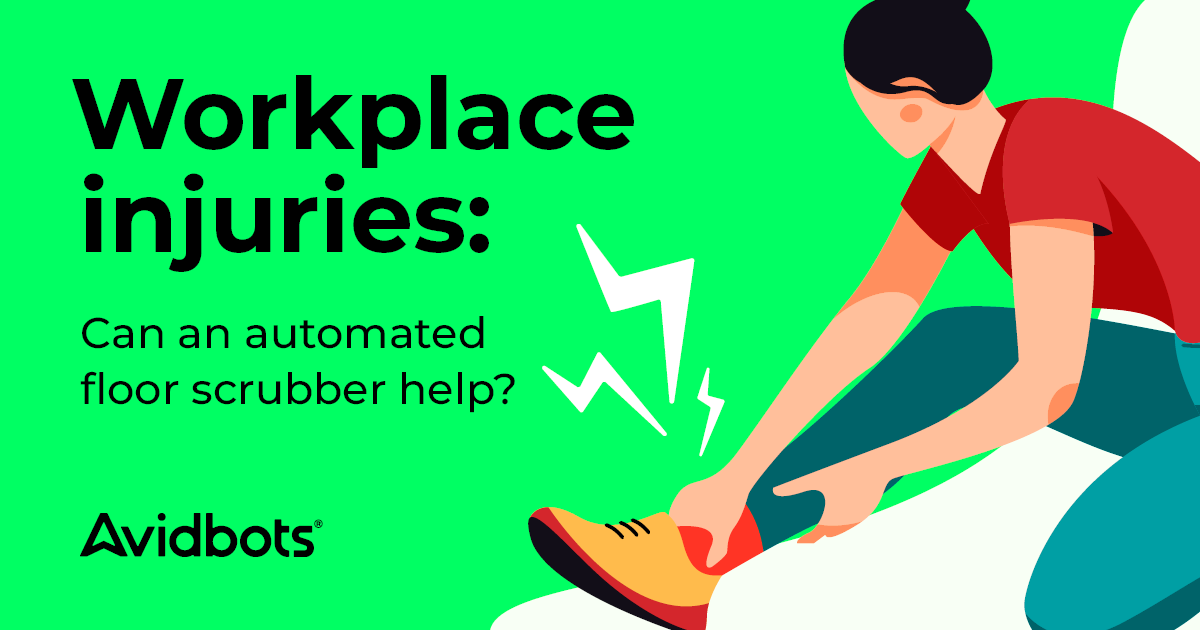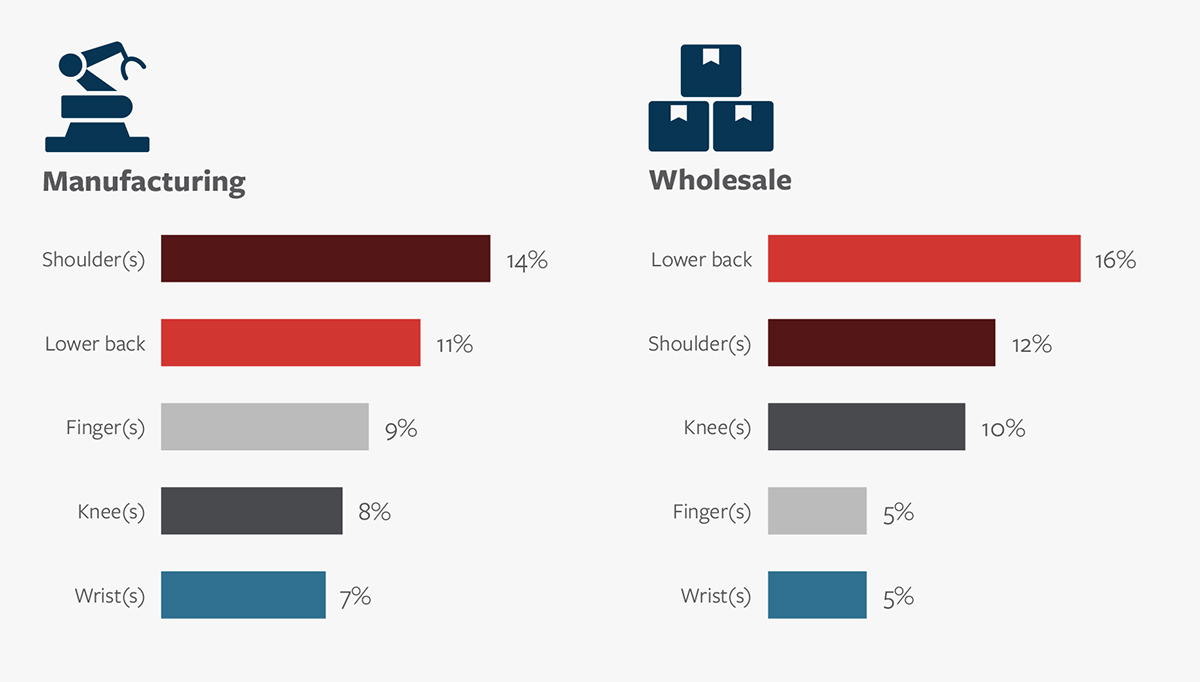
Workplace injuries: Can an automated floor scrubber help?
If you’re an office worker, you understand how ergonomics make life easier. Your chair, desk, monitor stand, and more help you get through your workday without discomfort and pain.
But for the millions of laborers whose job places physical demands on their bodies, ergonomic working conditions are a luxury. From warehouses to manufacturing facilities, efficiency — not comfort — is the top priority.
For workers on their feet for hours at a time, dangers ranging from overexertion to environmental hazards are a constant risk. And in certain facilities, these threats are more likely than others.
But what are the most common injuries, and what are the causes? In a report examining compensation claims from 1.2 million workers over a four-year period, insurance company Travelers answers these questions and more.
Employee experience and injury rates: Is there a connection?
Across all industries, one group suffers the most workplace injuries: new employees. Injuries occurring during an employee's first year of work accounted for 34% of all workplace injuries and compensation costs.
The fact that first-year employees injure themselves at a higher rate shows the importance of workplace knowledge and experience. This expertise undoubtedly includes how to avoid common injuries, as well as safer ways of working.
Hiring and retaining labor is a problem affecting every industry now. Consequently, when a revolving door of staff is the norm, they take their know-how with them, including any accumulated wisdom around safety and injury prevention.
With this in mind, it stands to reason that in select environments and industries some professions with higher-than-average employee turnover may be more susceptible to workplace injuries.
Take the cleaning professions, for example, with turnover rates of up to 200%. They also miss more days of work because of illness or injury than the average, speaking to both the dangers of their job and the correlation between employee turnover and workplace injuries.
This problem feeds itself over time too; a feedback loop of companies constantly needing to hire new employees because of high turnover, with these new recruits then more prone to getting hurt.
How are workers getting hurt?
Overexertion was the number one cause of injury across all industries. Whether it’s lifting heavy objects or contorting one’s body while working, 29% of workplace injuries happen because of staff pushing their bodies to the breaking point.
The second highest cause of workplace injuries was slips, trips, and falls at 23%. This workplace injury also had the highest average cost per claim, as well as employees missing an average of 83 days.
Dirty floors are a safety hazard in all environments, but in certain facilities it’s a more pressing issue. Manufacturing and wholesale operations are good examples.

Source: 2023 Travelers Injury Impact Report
In manufacturing facilities, the production process creates messes 24/7. Dirt, dust, debris, and fine particulate matter are just a handful of cleaning challenges that workers face every day. Left unchecked, product quality suffers. More importantly, though, staff are at increased risk of injury.
The same is true for warehouses and distribution centers. People and products are continuously in motion. From moving and unloading freight to inventory and order picking, high machine and foot traffic mean the floors don’t stay clean for long.
What are the most common injuries?
Across all claims, sprains and strains (38%) are the number one injury, followed by fractures (13%), contusions (8%), dislocations (7%), and inflammation (7%). In manufacturing and wholesale, sprains and strains account for 37% and 43% of injuries, respectively.
Now that we know the five leading injuries, which parts of the body suffer the most? For 25% of all claims, the lower back (13%) and shoulders (12%) were the areas most affected.
For manufacturing, shoulder injuries are slightly higher than average at 14%. Likewise for wholesale operations, where lower back injuries account for 16% of all claims.

Source: 2023 Travelers Injury Impact Report
Can advanced cleaning equipment improve safety?
When slips, trips, and falls are a major cause of workplace injuries, the solution seems straightforward: frequent and thorough floor care.
Yet, overexertion is the leading cause of injury, so placing more cleaning demands on your team will solve one problem while simultaneously creating another.
With that in mind, why continue to use a manual floor scrubber when there are easier and more efficient options?
After all, lower back and shoulder problems are the most common areas injured, so it makes little sense to sit for hours on an unergonomic ride-on floor cleaner or lug around a beefy push-behind scrubber.
However, is there a better way?
Neo’s got your back: A smarter solution for floor cleaning
Neo, the fully autonomous floor scrubbing robot, makes cleaning floors less physically demanding on your staff. Neo’s also more productive, efficient, and cost effective too.
Rather than manually pushing or riding heavy equipment, you push a button and tap a screen instead.
In fact, cleaning up to 42,000 square feet per hour and lasting up to six hours on a single charge, deploying Neo gives you the best of both worlds: simplicity and ease of use alongside better cleaning performance.
What’s more, this convenience is mutually beneficial for staff and manager alike.
For workers, they no longer need to waste a sizable part of their day performing the dirty, dangerous, and tiring job of cleaning the floors.
For managers, you reallocate staff to more productive, revenue-focused tasks while also lowering the physical demands — and therefore potential injury-related costs — on your team.
And if you’re in a manufacturing or wholesale facility, Avidbots has a purpose-built solution for these environments too, handling even more of the mess: Neo 2W.
If you’re looking to improve cleaning quality, workplace safety, and worker efficiency in one fell swoop, Avidbots can help.
Related articles
Subscribe to the Avidbots blog!
Stay in the know about all things Avidbots plus the latest industry and technology insights.